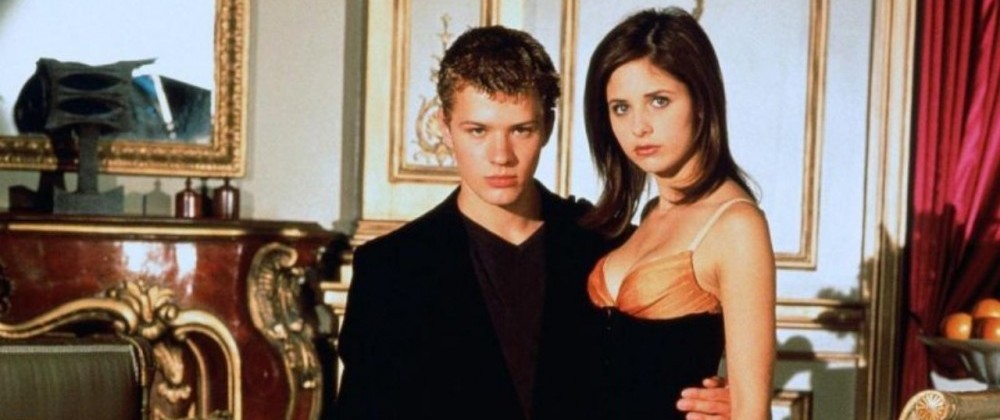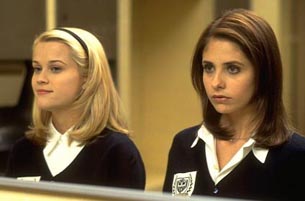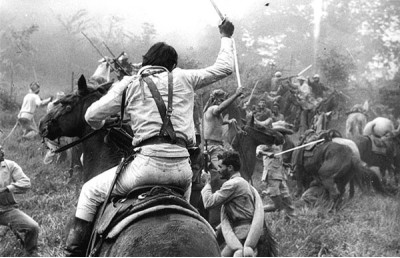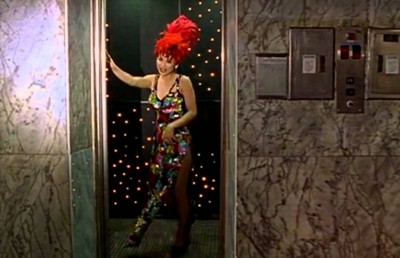When Pop Culture Meets High Literature. The case of Cruel Intentions and the epistolary novel Les Liaisons Dangereuses

In 1782, just 7 years before the French Revolution, Choderlos de Laclos, an ambitious but quite unlucky military man, wrote what became the greatest epistolary novel of the 18th century. Les Liaisons Dangereuses [1] shocked the entire society of its time and is still a shining example of debauchery and decadence. In 1999 its fourth cinematic adaptation was released, Cruel Intentions, directed by Roger Kumble [2]. Kumble’s directorial debut was considered as just another teen-flick for most, but a closer look reveals otherwise.
Narrative: the tool for a fruitful approach to the adaptation process
What cinema and literature share is above all the capacity to narrate stories. Both semiotic systems are langues [3]. What better way of comparing them, then, than using the narrative as the basis? The science of narratology offers the theory, as well as the methodological tools, which allow the theorist to make the barren issue of fidelity to the literary source disappear once and for all, when confronted with a novel to film adaptation. In his famous article “Introduction à l’analyse structurale des récits,” (1966) Roland Barthes distinguishes a set of two categories of narrative functions, which can be either easily transferred on the screen or pose a certain degree of difficulty. He names the first category Functions and the second Indices. The first category includes the sub-categories of cardinal functions and catalysts. The cardinal functions refer to significant events that are directly involved in the development of the plot, whereas the catalysts denote secondary events whose role, as Brian McFarlane states (1996: 14), is to “root the cardinal functions in a particular kind of reality, to enrich the texture of those functions.” As the above mentioned functions do not depend on language, “they are directly transferable from one medium to the other” (McFarlane 1996: 14). The category of Indices includes the indices proper (to use the McFarlane translation) and the informants. The indices proper “relate to concepts such as character and atmosphere and are therefore more broadly open to adaptation… informants include knowledge such as names, ages, and professions of characters, certain details of the physical setting and… share the authentication and individuating functions performed in other respects by catalysts” [McFarlane 1996: 14-15]. The tools proposed by Barthes will be used in the comparative analysis that follows as they aid the understanding of the adaptation process.
Main Structural Differences between Cruel Intentions and the novel
In accordance with Geoffrey Wagner’s breakdown, Cruel Intentions belongs to the category of adaptation called “commentary” (1975: 222) [4]. Kumble modernised Laclos’ epistolary novel by setting it in the midst of the upper class of Manhattan at the end of the 20th century. Although Kumble’s directorial debut is based on a 18th century novel, it constitutes a personal commentary on human relationships at the end of the second millennium, as well as on the dark side that is hidden within each one of us.
Changes in Informants
There are numerous changes in some of the characters’ names (informants). These changes from the original French names are understandable since it is an American production. A more substantial change is setting Cruel Intentions in modern times. A consequence of this is that the nobility titles are eliminated, even though the protagonists belong to the upper social classes.
The main protagonists are still Valmont and Merteuil, with the following differences in informants. Le Vicomte de Valmont becomes Sebastian Valmont (Ryan Philippe ) and La Marquise de Merteuil becomes Kathryn Merteuil (Sarah Michelle Gellar). The two youth are about to enter their senior high school year and they are not former lovers but step brother and sister living in an antique-filled mansion resembling a French chateau. Sebastian retains the qualities of the novel’s Valmont. He is handsome, ruthless, immoral and a womanizer, a modern dandy with an appalling reputation. Kathryn is an impudent young lady who manages to retain an impeccable social façade, just as the novel’s Marquise. The case of the post-modern Présidente de Tourvel is quite remarkable. In the film she is Annette Hardgrove (Reese Witherspoon), a 17-year-old young woman who does not believe in pre-marital sex and publishes articles with her views in teen magazines. One of these articles, entitled “Why I plan to Wait,” catches Sebastian’s attention and makes him decide to seduce her. An added bonus to her unquestionable virtue is the fact that Annette is also the daughter of Sebastian and Kathryn’s new headmaster and his victory would ensure him the notoriety he desires.

Cecile Caldwell (Selma Blair ), and not de Volanges, is a new girl in school and Kathryn is responsible for her orientation. The secondary characters are carefully chosen with an eye toward political correctness. For example, Kumble transforms Danceny into Cecile’s African-American music teacher; Madame de Volanges, the close friend of Tourvel, into Greg, a gay football player; and Azolan (Valmont’s faithful servant) into Blaine, the gay classmate who deals drugs and knows what skeletons hide in anyone’s closet, information that can be revealed at the right price. Much to the reader’s surprise, the ages of Kumble’s heroes and heroines are much closer to the original than those in Frears’ or Vadim’s adaptations, since Laclos’ Merteuil and Valmont are in their early twenties, and Cecile is 15 and Danceny 17. Therefore, we could note that Kumble only changed some names and occupations simply to fit his 20th century setting as well as a different continent.
The above-mentioned changes mark a change in the indices, that is in the atmosphere of the narration, as well as the psychological information about the characters, which clearly reflect the transposition of the plot to a new century and a new continent, something which fashions new customs, new beliefs and even new ways of conduct.
Changes in Cardinal Functions and Catalysts
Cruel Intentions follows the narrative programs of the main heroes (Merteuil and Valmont) and the differences in catalysts and cardinal functions have to do mainly with the ending.
Firstly, the duel between the Vicomte and Danceny is a catalyst in the novel that leads to a main cardinal function, the death of Valmont. Sebastian still dies in the film but his death occurs as a result of a freak accident after a fight on the streets of New York and not as the outcome of a duel. What is more, Sebastian dies while trying to save Annette (Tourvel). Whereas his death remains in the film, the difference in the catalysts which lead to it offer different interpretations. To begin, the custom of the duel has ceased to exist in modern society, making it understandable that Kumble did not include it in his adaptation. What is interesting however is that Kumble has Sebastian die trying to save his only true love. In the novel le Vicomte dies because his opponent was better than him and the reader has no way of knowing his true feelings for Tourvel. Nevertheless, in the film the spectator may exonerate Sebastian because even at the end of the story, and perhaps for the first time in his life, he manages to perform an unselfish deed.
Another main difference in a cardinal function is that Annette does not die of pain for her love for Valmont nor of her betrayal to God. The last scene of the movie finds her driving Sebastian’s luxurious Jaguar, in possession of his precious journal where he described in detail his and Kathryn’s machinations. In Cruel Intentions Annette is the only character that emerges victoriously out of a painful experience, despite the fact that she also violated her principles when she yielded and slept with Sebastian.
Conclusions
As far as the main themes of Les Liaisons Dangereuses are concerned there are considerable differences between the film and the novel. A main deviation concerns the heightened value of materialism that reigns in the film. In the novel the wager between Merteuil and Valmont concerns mainly le Vicomte, since if he is defeated, la Marquise does not require anything in exchange. His mere humiliation will be her only compensation. On the contrary, in Cruel Intentions Kathryn asks for Sebastian’s vintage car in case of her victory; thus underlying a materialism which makes her demand more than the possible demotion of her opponent. Clearly, this desirous need of possessions originated with the growth of materialism in 20th century western society.
Another interesting observation that can be concluded after analyzing the film is the raw language and the absolute absence of morality in the midst of such young, not-quite-yet adult characters. Sadly, however, we have to acknowledge that the modern teenage vocabulary makes use of four letter words and sexual insinuations, even if these are not used as frequently as in Cruel Intentions. We could assume that if Laclos were to write his novel today, he would have to use part of the youth’s idiolect, in order to reach a wider readership. It should also be noted that the two protagonists come from broken homes, which by definition constitutes a traumatic experience that leads a great number of teenagers to a rapid maturation process, and such potentially negative consequences as emulating adult behaviour, cruelty, indifference and a tendency for sheer and intense pleasures.
A main change occurs in the character of Annette-Tourvel. The Tourvel of the 20th century does not kneel. She is strong and intelligent and manages to defeat Kathryn-Merteuil. Her traumatic experience gives her the power to make a fresh start.
Director Roger Kumble manages to adapt one of the most important novels of the end of the 18th century to the end of the 20th century. Disguised under the label of teen-movie, we find a dissection of contemporary youth mores of the US upper classes. The être of the film is different from the paraître and this observation places the film into a genre of morality-sketching of a specific social class, as it approaches the basic themes of Laclos’ novel –love, friendship, and power– with consistency, firstly to the novel, and consequently to the social standards of its time.
Filmography: Cruel Intentions (1999). Kumble, Roger, Director.
Columbia Pictures / Cruel Productions / Newmarket Capita Group / Original Film
Script: Roger Kumble. Cast: Sarah Michelle Gellar (Kathryn Merteuil), Ryan Philippe (Sebastian Merteuil), Reese Witherspoon (Annette Hardgrove), Selma Blair (Cecile Caldwell)
Duration: 97’
Bibliography
Barthes, Roland. «Introduction à l’analyse structurale des récits». _L’aventure
Sémiologique_. Paris : Seuil. 1966. 1985. 167-206.
Laclos, Choderlos de. Les Liaisons Dangereuses. Paris: Librairie Générale Française, 1987.
McFarlane, Brian. Novel to Film. Oxford: Clarendon Press, 1996.
Wagner, Geoffrey. The Novel and the Cinema. Rutherford, NJ: Fairleigh Dickinson
University Press, 1975.
Endnotes
1 A short summary of the novel’s plot is as follows: The main protagonists are la Marquise de Merteuil and le Vicomte de Valmont. The plot begins when Merteuil asks Valmont to deflower fifteen-year-old Cécile de Volanges, in order to avenge her ex-lover Gercourt, Cécile’s future husband. Valmont refuses at first, because he is planning to seduce la Présidente de Tourvel, a married lady, famous for her virtue and religious beliefs. The two heroes place a wager. If Valmont sleeps with Tourvel and is able to deliver written proof of their lovemaking, Merteuil will then spend a night with him. La Marquise tries to fulfill her own plan of revenge by introducing the young Danceny to Cécile. However, when Valmont discovers that the young woman’s mother, Madame de Volanges, pours scorn on his name to Tourvel he resolves to deflower Cécile for revenge. At the same time, he truly falls in love with Tourvel, and starts a love affair. When Merteuil refuses to honor their wager, despite Valmont’s success, a war with disastrous consequences is declared between the two. Merteuil reveals the relationship of Cécile and Valmont to Danceny who immediately challenges le Vicomte to defend Cécile’s lost honor. Just before Valmont’s death in the duel, he manages to give Danceny a pack of letters (his correspondence with Merteuil) so that the whole Parisian society know her intrigues. Danceny distributes the letters, la Marquise is completely humiliated, gets ill and flees to Holland. Cécile gets sent back to the convent, Tourvel dies of shame and Danceny goes to Malta.
2 The other three adaptations of “Les Liaisons Dangereuses” were: Les Liaisons Dangereuses 1960, dir. Roger Vadim (1959), Dangerous Liaisons, dir. Stephen Frears (1988), and Valmont, dir. Milos Forman (1989).
3 We use the Saussurian distinction between langue and langage, the first being a social product, part of langage and a sum of necessary conventions (rules of oral and written speech) that are adopted by any given community to allow communication; the latter, langage, being the semiotic, communicative system of a language ensuring communication.
4 Wagner suggests three categories of filmic adaptations:
1. Transposition, where the literary source is adapted to the screen with minimum intervention. The so-called historic adaptations, such as David Lean’s Great Expectations (1946) and Stephen Frears’ Dangerous Liaisons (1988).
2. Commentary, where the literary source differs from the filmic adaptation with various changes such as different endings, transposition in time and setting of the plot, etc. In this category belong such films as Richard Loncraine’s Richard III (1995), directed by Richard Loncraine, and Roger Kumble’s Cruel Intentions (1999).
3. Analogy. This category comprises films which not only have different endings or settings but films where the spectator will have difficulty in recognizing the literary source. An example of analogic adaptation is Peter Greenaway’s Prospero’s Books (1991), based on Shakespeare’s The Tempest.














